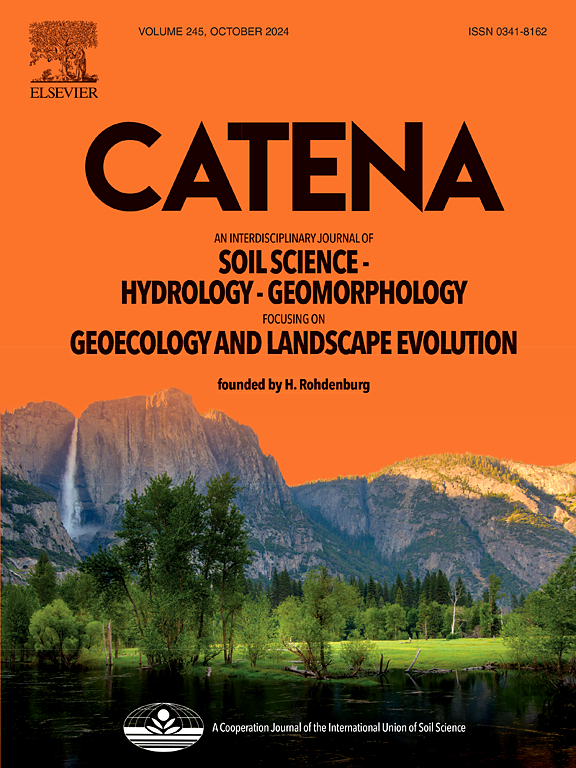NO3- sources and circulation in the shallow vadose zone in the edge of Dunhuang Mingsha sand dunes in an extremely arid area of Northwestern China
Qi, Shi , Ma, Jinzhu , Feng, Qi , Liu, Fei , He, Jianhua , Shu, Heping , Jia, Bing
2018 CATENA 2018 162(卷), null(期), (193-202页)
The unsaturated zone is a significant feature of the nitrogen cycle in arid areas connecting atmospheric precipitation and surface water to groundwater. To measure NO3-, Cl-, and NH4+ concentrations, precipitation samples (39.9592 degrees N, 94.3302 degrees E) were collected at the western edge of the Mingsha sand dunes. Soil profiles were taken along the northern edge of the dunes to determine NO3- and Cl- concentrations and delta O-80-NO3- and delta N-15-NO3- levels in soil water. The mNO(3)(-)/Cl-, mNH(4)(+)/Cl- and NH4+-N/NO3--N values in precipitation showed seasonal variations, reflecting the influence of distinct anthropogenic sources. The delta N-15-NO3- and delta(ONO3-)-O-18 of the LT profile ranged from 2.38 to 7.84 parts per thousand and 14.72 to 57.5 parts per thousand, respectively, and that of GC profile ranged from - 1.36 to 2.35 parts per thousand and 5.07 to 21.3 parts per thousand, respectively. These results suggest that the main sources of vadose zone nitrogen in the profiles are NO3- fertilizer and NH4+ in fertilizer and precipitation, all of which are influenced by agricultural sources. Obvious nitrification and the mixing of different sources were noted, but the profiles showed no evidence of denitrification. The findings of this study show that migration of NO3- and Cl- in the desert vadose zone is influenced by heavy rainfall events, vegetation, and evaporation. Heavy rainfall events promote leaching of NO3- and Cl- into the deep vadose zone, while evaporation at the surface prevents leaching and vegetation hinders the downward migration of NO3- and Cl-. Migration of NO3--N and Cl-1 in sand dunes is affected by the solute gradient concentration difference of the soil water, moving from areas of higher concentrations to lower concentration. The NO3--N and Cl- accumulations were 1.02 kg N ha(-1) and 3.45 kg ha(-1), respectively, throughout autumn. These were larger than could be attributed to the input flux of atmospheric precipitation, especially in the near-surface soil layer, likely illustrating the influence of atmospheric dry deposition.
相关推荐
- Identification of Priority Supply Areas for Carbon Sinks Based on Ecosystem Service Flow: A Case Study for the Hexi Region in Northwestern China [2018]
- Construction of landslide warning by combining rainfall threshold and landslide susceptibility in the gully region of the Loess Plateau: A case of Lanzhou City, China [2018]
- Evaluating the Dynamics of Groundwater Storage and Its Sustainability in the Loess Plateau: The Integrated Impacts of Climate Change and Human Activities [2018]
- The distribution and driving mechanism of soil inorganic carbon in semi-arid and arid areas: A case study of Alxa region in China [2018]
- Assessment of the Restoration Potential of Forest Vegetation Coverage in the Alxa Desert Region of China [2018]



